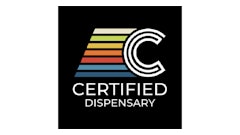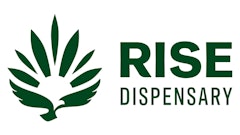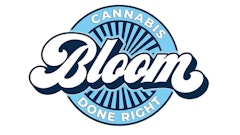
Many owner/operators in the dispensary business have a small number of employees, most of whom are part-time. As a result, common human resource (HR) practices can be put off or overlooked completely. Employee performance evaluation is one of those practices because it involves one-on-one conversations about expectations, which can be awkward or uncomfortable for managers.
In fact, any business, with any size staff, needs to track employee performance. Employees are the face of your business. As an owner/operator, you have a vision for your business and you have set goals to ensure your company meets that vision. Have you shared your vision with your employees? Do they perform in accordance with it and understand how their job relates to the company’s mission? Are they aware of what’s expected of them?
Assessing employee performance doesn’t have to be time consuming, or even overly sophisticated. The important idea is to have an evaluation process in place that is understood by both management and employees, and is administered consistently, at regular intervals. This process provides information for a meaningful performance discussion, establishes a baseline and documents performance expectations. This latter benefit is particularly important when an employee’s work performance is not meeting expectations, or has not improved over time. Many potential problems are avoided when it is necessary to terminate a non-performing employee, and there is evidence of consistent performance evaluation discussions that led to the decision to terminate. Owner/operators who avoid employee evaluations and the difficult conversations that accompany them are putting their business’ success on the line and profits at risk.
Step 1: The Job Description
The first step in understanding employee performance is to have a clearly defined job description for each role in your organization. For small shops, it may be that every employee is expected to do every job within each role. Thus, the employee’s job description would include roles such as:
- Customer access and computing systems
- Product knowledge
- Customer sales
- Cash receipts, and beginning and ending balances
- Product inventory management
- Maintenance of retail area in facility
- Marketing and research
- Back office roles in receiving, storage, testing, re-packaging
The job description should include all tasks associated with each role and provide a clear statement of expectations. For example, under the role of “customer sales,” the job description would list such behaviors as:
- Greets each customer individually and makes them feel at ease at the counter
- Listens attentively for customer needs and wants
- Able to recommend a variety of products, including edibles, oils, infused products, etc.
- Able to answer questions and concerns about product characteristics and performance
- Understands the pricing of all products and is knowledgeable about specials, deals and promotions
- During busiest hours of operation, handles self with professionalism, remains confident and calm
- Consistently takes advantage of up-sell opportunities
- Reflects and supports the mission of organization at all times
- List of other desired or required behaviors and attributes
The job description should also touch on overall behavior expectations, required experience, working hours, expected attendance, teamwork, and other key aspects of the role. The important thing is that there is a written job description that meets your state’s employment standards, has been reviewed by and approved by management and that the employee clearly understands.
Of course, as an organization increases in size and number of employees, job descriptions become more segmented by role. In a larger dispensary, there could be several roles dealing with several aspects of the operation. Thus, there might be one job description for “customer access and computing systems,” with its inherent tasks that could be performed by two or three employees; and another job description for “customer sales,” which may involve employees strictly hired to perform those tasks under the customer sales role.

Step 2: Developing the Process
Once you have your written job descriptions and the employees understand their roles clearly, you can move to performance evaluation. The purpose of evaluating employees’ performance is to have an integrated approach to acknowledging and enhancing the performance of the people within your organization. This process has four elements:
- Evaluating employees’ performance
- Holding employees accountable
- Providing regular, ongoing feedback
- Helping each person fulfill their potential
The process is designed to facilitate communication between you (and/or management) and the employee regarding job performance and accomplishments during a specified period. This evaluation process is not only about critiquing the performance, but also about encouraging an exchange of information between you and the employee. An employee evaluation process can be an opportunity for both employer and employee to learn and to grow. Success of the process depends on both of you.
An integral part of this step is the selection and use of an evaluation tool. There are many to choose from, so it is not necessary to create an evaluation tool from scratch. It is important, however, to modify the instrument to reflect those critical tasks (found on that employee’s written job description) that are important to your business. Equally important are the metrics or standards you use to evaluate employee success on each task. These standards, or definitions of success, must be written, and must be the same for every employee within that job role.
The metric states how much, how many and how often the task should be performed. Then the employee is scored using a defined scale.
Using our small-dispensary example in which an employee is responsible for “customer sales,” some of the metrics for the tasks might be available using the dispensary’s inventory control system, which often tracks:
- Number of sales per shift, per day, per week
- Number of specialty items sold per shift, per day, per week
- Accuracy of inventory or register within a certain margin of error consistently per week, per month
Some point-of-sale (POS) or inventory systems might also be able to track individual performance around:
- Number of consultations that resulted in add-on sales per shift, per day, per week
- Number of repeat customers who asked for a specific employee by name per day, per week
While the dispensary may decide to add additional metrics, the data already available can provide basic performance information that will allow management to distinguish between great performers and those who need improvement.
The scale that is used can vary, again, according to your business and management preference. Most small businesses use a scale that ranks the performance on the basis of “Did Not Meet Expectations”/“Met Expectations”/“Exceeded Expectations,” or “Unsatisfactory”/“Satisfactory”/
“Excellent.” Whichever scale you decide to use, be sure that each part is defined. In other words, define “Met Expectations” so that everyone who uses the tool can abide by the same definition and understand what that score indicates in terms of performance, thus ensuring a fair and equitable process.
To help two-way communication, and to gain insight into employees’ ideas and suggestions, the dispensary owner/operator might also want to include an employee self-assessment as part of the evaluation process. An easy method is to use the same evaluation instrument and have the employee score themselves using the defined performance metrics and criteria. At the end of the evaluation, an additional section designed to solicit feedback and ideas is usually added, with questions such as:

- What do you think was your most important contribution to our dispensary business this year?
- What types of training or experience would help you improve your performance as (job title)?
- What ideas do you have for improving our retail sales/profit margins/traffic flow/etc.?
Step 3: Having the Performance Conversation
This is perhaps the most difficult step for some owner/operators. Here are some important facts that can help you as you prepare for a performance discussion with employees:
- The purpose of the conversation is not to punish the employee, but rather to help him improve his performance. Encourage employees to continue to do the tasks they are doing well, and have a two-way discussion around ideas to improve performance on tasks where they scored low or didn’t meet expectations. Thus, the discussion begins with an explanation of the purpose for meeting, and the importance of reviewing the employee’s evaluation results with open minds.
- Do not delay the conversation: The longer you wait, the more difficult it will become to have it. Furthermore, if you delay or don’t have the conversation, the employee is likely to think that all is well and that no improvement is necessary.
- Come to the discussion prepared to describe the expected behaviors and be equipped to offer specifics of what “exceed expectations” looks like. It’s possible an employee will not know what is necessary to do a better job.
- This is a conversation—both people need to talk and share ideas. Create engagement by asking the employee for ideas on how to improve those low-performance areas. If you have all the answers and simply tell an employee what to do, they are likely to nod in agreement, but really haven’t owned the solution.
- Contrary to what you might think, most people want to receive feedback about their performance. This is particularly true of the millennial generation, those “twenty-somethings” that likely form the majority of your dispensary workforce. Feedback about performance is desired because your employees want to know what they are doing well.
- Without performance evaluation discussions, your employees don’t know if they are—or aren’t—meeting expectations. This lack of clarity will eventually lead to low morale, which leads to performance problems that are even harder to manage. When high-performing employees witness low-performing employees getting a pass on their performance, it takes a toll on the overall atmosphere in the dispensary. Follow these three steps, and begin the evaluation process now. If your organization has an employee evaluation plan in place, review it to ensure that it includes the suggested actions and meets the criteria outlined above.
Regardless of the evaluation process or instrument you decide to use, the important idea is that you are regularly and consistently gathering measurable information regarding an employee’s performance, attitude and ability. Owner/operators who do not complete performance reviews or deal with performance issues risk reducing employee morale, decreasing credibility of management, diminishing organizational effectiveness and contributing to increased costs for their dispensary. Completing performance reviews on a regular basis is essential for maintaining employee motivation, assessing capabilities for growth and change, and improving your bottom line.

























